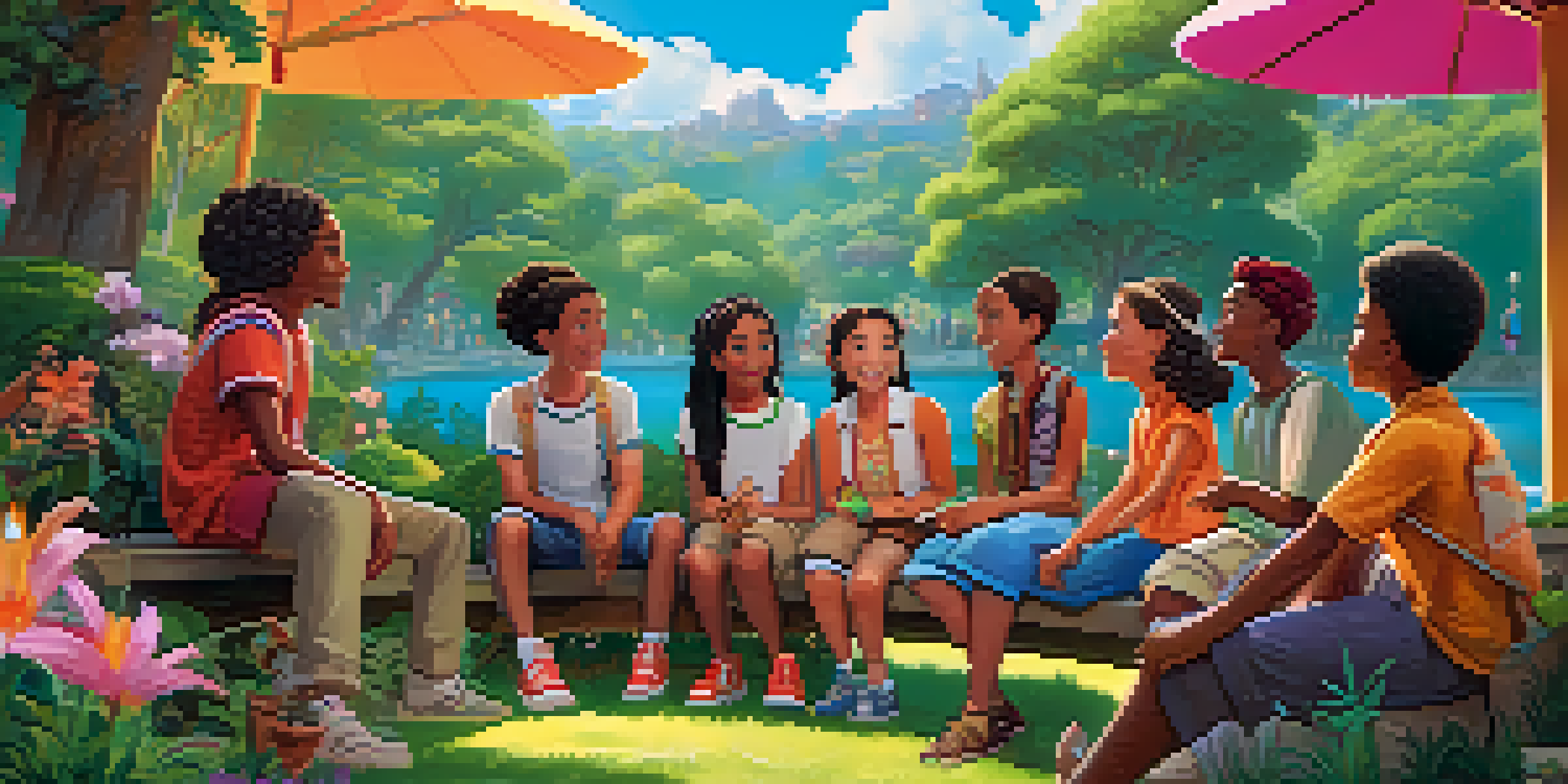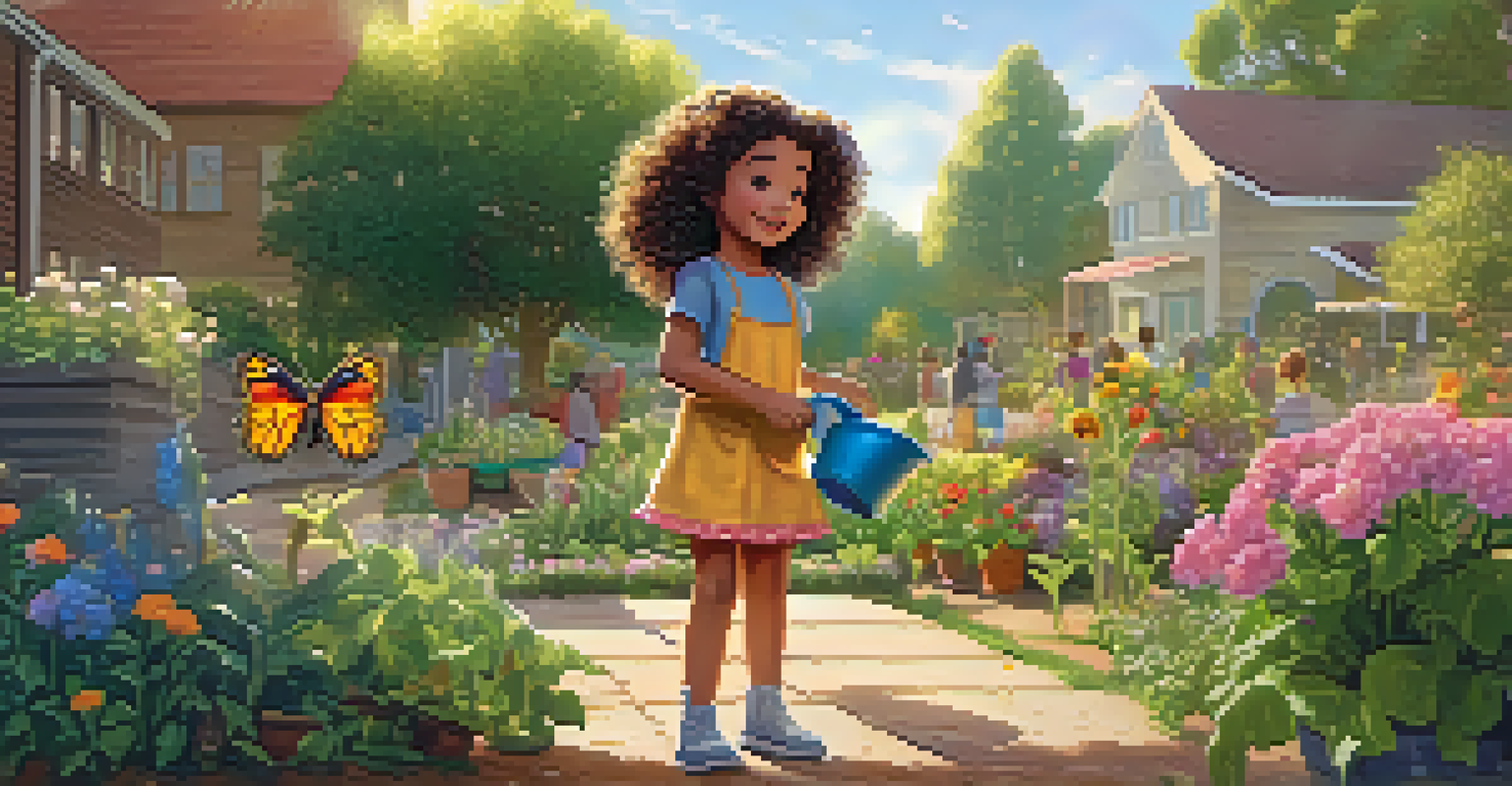The Role of Animation in Addressing Social Issues for Youth

Understanding Animation as a Powerful Communication Tool
Animation transcends language barriers, making it an effective medium for communicating complex social issues. By using vibrant visuals and relatable characters, animated content can engage young audiences in ways that traditional media often cannot. This is particularly important in addressing topics like mental health, bullying, and environmental concerns that resonate deeply with youth.
Animation can explain whatever the mind of man can conceive.
For instance, a well-crafted animated short can encapsulate the struggles of a teenager dealing with anxiety, presenting their challenges in a manner that feels accessible and relatable. This approach not only fosters understanding but also encourages empathy among peers who might not yet grasp these issues fully. Animation's unique ability to simplify complex narratives makes it an invaluable asset in social storytelling.
Moreover, the engaging nature of animation maintains the viewer's attention, creating a space where important conversations can start. By leveraging humor, adventure, or emotional storytelling, creators can highlight pressing social issues while keeping the audience entertained. This balance of fun and education is what makes animation particularly effective for youth.
Animation in Raising Awareness about Mental Health
Mental health is a significant concern for today's youth, and animation has proven to be a vital platform for raising awareness. Animated series and films can illustrate the complexities of mental health issues, such as depression or anxiety, in a way that feels less intimidating. By making these topics more relatable, animation encourages open conversation among young viewers.

For example, shows like 'BoJack Horseman' tackle serious mental health themes while still being entertaining, demonstrating that it’s okay to seek help and share one’s feelings. These narratives can help destigmatize mental health discussions, making it easier for young people to express their struggles without fear of judgment. Animation thus serves as a bridge between education and empathy.
Animation as a Youth Engagement Tool
Animation effectively communicates complex social issues to young audiences, fostering understanding and empathy.
Additionally, animated public service announcements have successfully reached youth, providing them with resources and coping strategies. By combining engaging visuals with key messages, these animations can leave a lasting impact, motivating young viewers to take action regarding their mental health or that of their peers.
Addressing Bullying Through Animated Narratives
Bullying is a pervasive issue in schools, and animation can play a crucial role in addressing this problem. Through storytelling, animated content can depict the emotional turmoil experienced by victims, helping viewers understand the consequences of bullying. This can foster compassion and encourage bystanders to stand up against such behavior.
The power of storytelling is the ability to inspire and empower people to act.
For instance, shows like 'The Amazing World of Gumball' tackle bullying with humor while subtly conveying its seriousness. By presenting relatable characters facing bullying, these animations create a safe space for discussions about empathy, friendship, and support. This approach not only entertains but also educates young viewers on how to respond to bullying situations.
Moreover, animation can inspire youth to become advocates for change in their schools. By showcasing positive conflict resolution and friendship-building, animated narratives can motivate young people to cultivate a more inclusive community. This proactive approach empowers youth to take initiative against bullying, ultimately leading to a more supportive environment.
Environmental Awareness Through Engaging Animation
With climate change being a pressing issue, animation has emerged as a powerful tool for promoting environmental awareness among youth. Animated films and series can depict the beauty of nature while also highlighting the consequences of environmental neglect. This dual approach captivates young audiences and instills a sense of responsibility.
For example, movies like 'Wall-E' illustrate the impact of pollution and waste in a captivating way that resonates with children. By presenting these themes through engaging storytelling, youth can better understand their role in protecting the planet. Animation simplifies complex environmental issues, making them more digestible and inspiring action.
Raising Awareness on Mental Health
Animated content helps destigmatize mental health discussions among youth, encouraging open conversations and providing resources.
Additionally, animated characters can serve as role models for environmental stewardship. When young viewers see their favorite characters taking care of the Earth, it empowers them to do the same. This connection fosters a generation of environmentally conscious individuals who are more likely to advocate for sustainable practices.
Promoting Diversity and Inclusion in Animated Stories
Diversity and inclusion are essential topics for today's youth, and animation can be a powerful medium to promote these values. By featuring characters from various backgrounds, animated content can provide representation that resonates with underrepresented groups. This representation is crucial for fostering a sense of belonging among young viewers.
For instance, films like 'Coco' celebrate cultural heritage and family values, teaching youth about the importance of understanding and respecting different traditions. Such narratives encourage empathy and appreciation for diversity, helping to create a more inclusive mindset among young audiences. Animation thus serves as a mirror, reflecting the rich tapestry of society.
Moreover, inclusive animated content can challenge stereotypes and spark critical conversations about race, gender, and identity. When young viewers see diverse characters navigating their experiences, it opens the door for dialogue about acceptance and understanding. This dialogue is vital in shaping a more equitable future for all.
The Role of Animation in Empowering Youth Voices
Animation not only addresses social issues but also empowers youth to express their voices. By providing platforms for young creators, animated content can showcase diverse perspectives and stories that matter to them. This empowerment fosters creativity and encourages youth to engage with the world around them.
For example, programs that allow young people to create their own animated shorts can lead to impactful storytelling. These initiatives not only hone their artistic skills but also instill confidence in sharing their experiences. Animation becomes a medium through which youth can narrate their journeys and advocate for change.
Empowering Youth through Creation
By allowing young creators to share their stories through animation, we empower them to express their voices and advocate for change.
Furthermore, animated competitions and workshops can motivate young creators to tackle social issues that resonate with them. When they see their ideas come to life on screen, it reinforces the notion that their voices matter. This sense of agency is pivotal in cultivating a generation of socially-aware and active young citizens.
Future Directions for Animation in Social Advocacy
As technology evolves, the potential for animation to address social issues continues to grow. Innovations like virtual reality (VR) and interactive storytelling are opening new avenues for engagement. These advancements can create immersive experiences where youth can explore complex social issues firsthand.
For instance, VR animations can transport viewers into different environments, allowing them to experience the effects of bullying or environmental degradation. This immersive storytelling can have a profound impact, as it cultivates empathy by placing viewers in someone else's shoes. The future of animation holds exciting possibilities for deeper connections and understanding.

Additionally, as more creators recognize the power of animation in social advocacy, we can expect a surge in content that addresses pressing issues. Collaborations between animators, educators, and social organizations can lead to impactful projects that resonate with youth. By harnessing the power of animation, we can continue to inspire change and empower the next generation.